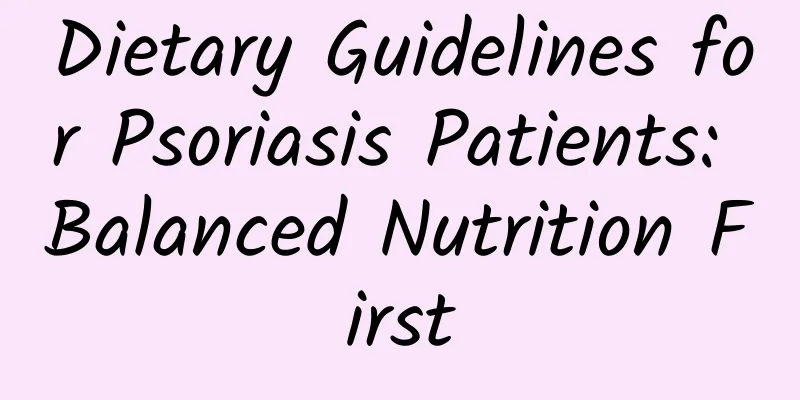Eat seaweed and kelp to get rid of visceral fat and obesity

|
Are you a "big-bellied man" or a "small-bellied woman"? Be careful, fat accumulated in the abdomen may increase the risk of diabetes! A Japanese physician specializing in diabetes and neurology said that high blood sugar is closely related to visceral fat obesity. Once you find that your BMI is greater than 24, you should actively lose weight. In addition to exercise, you may want to eat moderate amounts of seaweed and kelp, which can help reduce sugar absorption, inhibit blood sugar rise, and burn lipids! BMI greater than 24 increases the risk of diabetes Japanese physician Tsuyoshi Asano, who specializes in diabetes and neurology, pointed out in his book "Hyperglycemia Control, 70 Effective Ways to Lower Blood Sugar" that obesity and hyperglycemia are closely related. People who are excessively obese have enlarged fat cells, which make them less sensitive to insulin, and their demand for insulin increases, making it impossible for insulin to function normally, which greatly increases the risk of developing diabetes. The World Health Organization recommends using the body mass index (BMI) to measure obesity levels. The National Health Service recommends that the BMI value for domestic adults should be maintained between 18.5 and 24. When BMI ≧ 24, it means that the person is overweight or obese, and is at risk of developing diabetes. The formula for calculating BMI value is: weight (kg) divided by height (m) squared. Visceral fat type obese diabetic patients eat seaweed and kelp to help lose fat Obesity is usually divided into two types. The first is the accumulation of subcutaneous fat in the abdomen or hands and feet; the second is the accumulation of mesenteric fat around the abdomen, forming "visceral fat obesity." The second type of obesity associated with diabetes is visceral fat. Fortunately, visceral fat is easier to remove than subcutaneous fat. If you want to get rid of visceral fat, you basically need to have a proper diet and exercise, and between the two, diet therapy is more important. People with high blood sugar and obesity problems may wish to eat moderate amounts of seaweed and kelp, which can help reduce sugar absorption and burn lipids. Seaweed and kelp contain water-soluble dietary fiber "alginic acid" which helps reduce sugar absorption Seaweed and kelp contain a large amount of water-soluble dietary fiber such as alginate and fucoxanthin. These dietary fibers are sticky polysaccharides that will dissolve into a viscous state in the intestine. They can wrap up sugars, lipids, bile acids and other substances in the intestine and excrete them directly out of the body, or slow down the rate of intestinal absorption and reduce the amount of sugar absorbed, thereby achieving the purpose of inhibiting the rise in blood sugar. In addition, minerals are attached to alginic acid to help the human body absorb minerals. Good news for diabetic patients: eating seaweed and kelp to supplement essential minerals In addition to water-soluble dietary fiber, seaweed and kelp also contain minerals such as magnesium, zinc, and chromium. These minerals are materials for the production of insulin and also play an indispensable role in the metabolism of carbohydrates or lipids. Once you suffer from diabetes, minerals such as magnesium, zinc, and chromium in the body are easily excreted through urine. Therefore, moderate intake of seaweed foods can replenish the lost minerals. Seaweed and kelp are rich in vitamins B1, B2, and B6, which promote the burning of sugars and lipids. Seaweed and kelp are also rich in vitamins B1, B2, and B6. These vitamins are like lubricants in machinery and can help produce energy. Once these essential vitamins are lacking, the sugars and lipids eaten cannot be burned smoothly and are easily accumulated in the body, causing blood sugar levels to rise, which is also one of the causes of obesity. [Ingredients and functions of seaweed and kelp] Ingredient 1: Calcium, magnesium, zinc, chromium: inhibit the rapid rise of blood sugar levels. Ingredient 2: Alginate: Lowers blood pressure and prevents arteriosclerosis. Ingredient three: α-linolenic acid, EPA, DHA: clean the blood and prevent arteriosclerosis. Ingredient 4/Cholesterol: Reduces cholesterol or triglycerides. Ingredients 5: Alginic acid, fucan, glucomannan: lower blood sugar levels and improve constipation. Ingredient 6/Vitamin A and B complex: break down sugars and lipids. Ingredient 7/β-carotene, chlorophyll: antioxidants with anti-cancer effects. |
<<: Stretching makes running less tiring! Fitness trainer tips
>>: Whole grains + fruits and vegetables = liver detoxification? It turned out to be wrong...
Recommend
Is it safe to have sex right after your period? Not safe
The period just after the menstrual period is con...
What should I do if I have uterine fibroids? What are the women who are prone to uterine fibroids?
Uterine fibroids are a common disease in women of...
Treatment of ovarian cysts in women
Ovarian cysts are a very serious gynecological di...
Symptoms of different degrees of atrophic vulvar leukoplakia
Usually the symptoms of vulvar leukoplakia are ca...
What to check for endometriosis
Endometriosis is a common female infertility dise...
Soy milk is charming! Ultra Clean Health Angel Online Voting
There are many benefits to drinking soy milk. Not...
Experts will introduce the symptoms of chronic pelvic inflammatory disease
Chronic pelvic inflammatory disease is a type of ...
Analysis of four common methods of treating pelvic inflammatory disease
There are many different opinions on the treatmen...
What are the maintenance methods after ectopic pregnancy surgery?
Although ectopic pregnancy is not a normal pregna...
Experts explain the dietary treatment of acute cervicitis
Diet therapy is a treatment method for acute cerv...
What to do if you have a miscarriage
Miscarriage is a difficult situation that many wo...
Taipei City randomly tested 49 pieces of glutinous rice dumplings, all of which passed inspection
In addition to viewing lanterns and carrying lant...
Things to note when treating vaginitis
How to treat vaginitis? Daily care is very helpfu...
How to regulate irregular menstruation? Chinese medicine is effective
What medicine can be taken to regulate irregular ...
Detailed explanation of the medication for endometrial tuberculosis
Endometrial tuberculosis is a common gynecologica...









